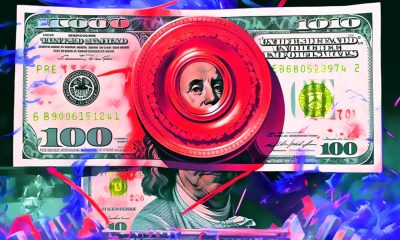

others
Gold sticks to modest intraday gains, US macro data and FOMC minutes awaited – Crypto News
- Gold price attracts dip-buying amid Fed rate cut bets, geopolitical risks and China’s economic woes.
- The USD preserves the overnight strong gains amid elevated US bond yields and acts as a headwind.
- Traders might also refrain from placing aggressive bets ahead of US data and FOMC meeting minutes.
Gold price (XAU/USD) retreated over $20 intraday and finally settled in the red for the third successive day on Tuesday, albeit lacking follow-through selling. Expectations that the Federal Reserve (Fed) will ease its monetary policy this year keep a lid on the recent US Dollar (USD) recovery from a multi-month low touched last week. This, along with concerns about fragile economic recovery in China and geopolitical risks, assisted the safe-haven commodity in attracting some buyers on Wednesday.
That said, doubts over early interest rate cuts by the Fed, which led to the overnight sharp move higher in the US Treasury bond yields, act as a headwind for the non-yielding Gold price. Hence, the FOMC meeting minutes will be scrutinized for cues about the Fed’s future policy moves, which, in turn, will drive the USD and the non-yielding yellow metal. In the meantime, the US ISM Manufacturing PMI and JOLTS Job Openings data will be looked upon for short-term trading opportunities.
Daily Digest Market Movers: Gold price trades with modest gains amid softer US Dollar
- A combination of supporting factors assists the Gold price to regain positive traction on Wednesday and snap a three-day losing streak.
- Bets that the Federal Reserve will cut interest rates in March turn out to be a key factor lending support to the non-yielding yellow metal.
- The possibility of a further escalation of conflict in the Red Sea, along with China’s economic woes, also acts as a tailwind for the safe-haven metal.
- The official Chinese PMI released over the weekend indicated a further deterioration in manufacturing activity and little signs of recovery at the end of 2023.
- A private survey showed on Tuesday that China’s factory activity expanded at a quicker pace in December but business confidence for 2024 remained subdued.
- The US Dollar consolidates the overnight strong gains to a more than one-week top, helped by a sharp rise in the US bond yields, and caps the commodity.
- Traders might also prefer to wait on the sidelines ahead of the US ISM Manufacturing PMI, JOLTS Job Openings data and the crucial FOMC meeting minutes.
Technical Analysis: Gold price needs to break through $2,078 barrier for bulls to seize control
From a technical perspective, the overnight failure near the all-time high closing, around the $2,077-2,078 region, and the subsequent slide warrants caution for bullish traders. The said hurdle should now act as a key pivotal point, which if cleared decisively will set the stage for a move towards reclaiming the $2,100 round-figure mark. Meanwhile, oscillators on the daily chart are holding comfortably in the positive territory and support prospects for the emergence of some dip-buying at lower levels.
The overnight low, around the $2,055 area, now seems to protect the immediate downside ahead of the $2,040 horizontal zone. A convincing break below the latter might turn the Gold price vulnerable to accelerate the downfall further towards the $2,020 intermediate support en route to the 50-day Simple Moving Average (SMA), currently near the $2,008-2,007 region, and the $2,000 psychological mark. Some follow-through selling will expose the $1,960 confluence, comprising the 100- and the 200-day SMAs.
US Dollar price today
The table below shows the percentage change of US Dollar (USD) against listed major currencies today. US Dollar was the weakest against the .
| USD | EUR | GBP | CAD | AUD | JPY | NZD | CHF | |
| USD | -0.16% | -0.11% | 0.04% | 0.11% | -0.15% | -0.18% | -0.07% | |
| EUR | 0.17% | 0.03% | 0.19% | 0.25% | 0.01% | -0.03% | 0.08% | |
| GBP | 0.11% | -0.04% | 0.16% | 0.22% | -0.05% | -0.07% | 0.04% | |
| CAD | -0.03% | -0.19% | -0.15% | 0.06% | -0.18% | -0.21% | -0.11% | |
| AUD | -0.11% | -0.24% | -0.21% | -0.06% | -0.25% | -0.28% | -0.18% | |
| JPY | 0.15% | -0.03% | 0.02% | 0.19% | 0.23% | -0.07% | 0.06% | |
| NZD | 0.18% | 0.03% | 0.07% | 0.24% | 0.30% | 0.03% | 0.11% | |
| CHF | 0.09% | -0.07% | -0.03% | 0.11% | 0.19% | -0.07% | -0.10% |
The heat map shows percentage changes of major currencies against each other. The base currency is picked from the left column, while the quote currency is picked from the top row. For example, if you pick the Euro from the left column and move along the horizontal line to the Japanese Yen, the percentage change displayed in the box will represent EUR (base)/JPY (quote).
Interest rates FAQs
Interest rates are charged by financial institutions on loans to borrowers and are paid as interest to savers and depositors. They are influenced by base lending rates, which are set by central banks in response to changes in the economy. Central banks normally have a mandate to ensure price stability, which in most cases means targeting a core inflation rate of around 2%.
If inflation falls below target the central bank may cut base lending rates, with a view to stimulating lending and boosting the economy. If inflation rises substantially above 2% it normally results in the central bank raising base lending rates in an attempt to lower inflation.
Higher interest rates generally help strengthen a country’s currency as they make it a more attractive place for global investors to park their money.
Higher interest rates overall weigh on the price of Gold because they increase the opportunity cost of holding Gold instead of investing in an interest-bearing asset or placing cash in the bank.
If interest rates are high that usually pushes up the price of the US Dollar (USD), and since Gold is priced in Dollars, this has the effect of lowering the price of Gold.
The Fed funds rate is the overnight rate at which US banks lend to each other. It is the oft-quoted headline rate set by the Federal Reserve at its FOMC meetings. It is set as a range, for example 4.75%-5.00%, though the upper limit (in that case 5.00%) is the quoted figure.
Market expectations for future Fed funds rate are tracked by the CME FedWatch tool, which shapes how many financial markets behave in anticipation of future Federal Reserve monetary policy decisions.
-

 Cryptocurrency1 week ago
Cryptocurrency1 week agoWhale Sells $407K TRUMP, Loses $1.37M in Exit – Crypto News
-

 Blockchain1 week ago
Blockchain1 week agoRobinhood Dealing With Fallout of Tokenized Equities Offering – Crypto News
-

 Cryptocurrency1 week ago
Cryptocurrency1 week agoSatoshi-Era Bitcoin Whale Moves Another $2.42 Billion, What’s Happening? – Crypto News
-

 Blockchain6 days ago
Blockchain6 days agoRipple and Ctrl Alt Team to Support Real Estate Tokenization – Crypto News
-
Technology6 days ago
Fed Rate Cut Odds Surge As Powell’s Future Hangs In The Balance – Crypto News
-

 Cryptocurrency1 week ago
Cryptocurrency1 week agoCardano’s $1.22 target: Why traders should be aware of THIS ADA setup – Crypto News
-
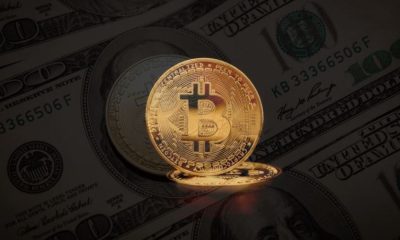
 Cryptocurrency1 week ago
Cryptocurrency1 week agoBitcoin Breaches $120K, Institutional FOMO Takes and House Debate Propel Gains – Crypto News
-
Technology6 days ago
Fed Rate Cut Odds Surge As Powell’s Future Hangs In The Balance – Crypto News
-
Cryptocurrency1 week ago
Why Is Bitcoin Up Today? – Crypto News
-

 Cryptocurrency1 week ago
Cryptocurrency1 week agoStrategy Resumes Bitcoin Buys, Boosting Holdings to Over $72 Billion in BTC – Crypto News
-
Business1 week ago
Pepe Coin Rich List June 2025: Who’s Holding Highest PEPE as it Nears Half a Million Holders? – Crypto News
-

 Cryptocurrency1 week ago
Cryptocurrency1 week agoIt’s a Statement, Says Bitfinex Alpha – Crypto News
-
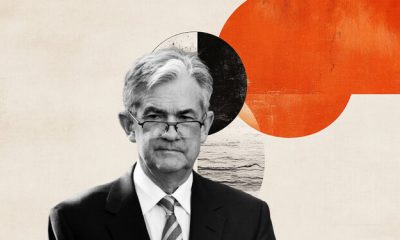
 others6 days ago
others6 days agoEUR/USD recovers with trade talks and Fed independence in focus – Crypto News
-

 Cryptocurrency5 days ago
Cryptocurrency5 days agoBitcoin trades near $119K after new all-time high; Coinbase rebrands wallet to ‘Base App’ – Crypto News
-
Business5 days ago
XLM Is More Bullish Than ETH, SOL, And XRP, Peter Brandt Declares – Crypto News
-
![Stellar [XLM] bulls exhausted after rally - Is a pullback nearby?](https://dripp.zone/news/wp-content/uploads/2025/07/Stellar-XLM-bulls-exhausted-after-rally-Is-a-pullback.webp-400x240.webp)
![Stellar [XLM] bulls exhausted after rally - Is a pullback nearby?](https://dripp.zone/news/wp-content/uploads/2025/07/Stellar-XLM-bulls-exhausted-after-rally-Is-a-pullback.webp-80x80.webp) Cryptocurrency1 week ago
Cryptocurrency1 week agoStellar [XLM] bulls exhausted after rally – Is a pullback nearby? – Crypto News
-

 others6 days ago
others6 days agoTop Crypto Exchange by Trading Volume Binance Announces Airdrop for New Ethereum (ETH) Ecosystem Altcoin – Crypto News
-
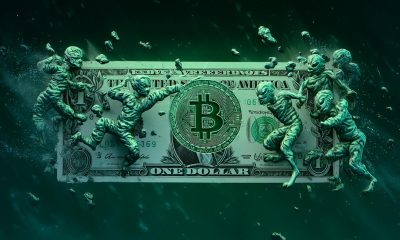
 others6 days ago
others6 days agoVanEck Details Key Drivers Boosting Bitcoin Price, Including Corporate Treasury Demand, ETF Flows and More – Crypto News
-
Business6 days ago
XRP Lawsuit Update: Ripple Paid $125M in Cash, Settlement Hinges on Appeal – Crypto News
-

 Blockchain1 week ago
Blockchain1 week agoZiglu Faces $2.7M Shortfall as Crypto Fintech Enters Special Administration – Crypto News
-

 Blockchain1 week ago
Blockchain1 week agoUK Banks Should not Issue Stablecoins – Crypto News
-

 Cryptocurrency1 week ago
Cryptocurrency1 week agoDonald Trump Jr. backs social media startup aiming to become a crypto powerhouse – Crypto News
-
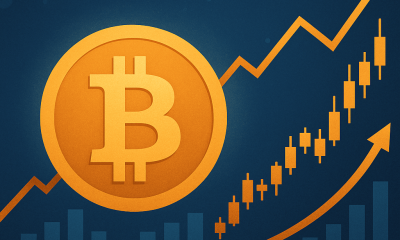
 Blockchain1 week ago
Blockchain1 week agoThe Bitcoin Liquidity Supercycle Has Just Begun: Hedge Fund CEO – Crypto News
-

 Technology1 week ago
Technology1 week agoGoogle, Anthropic, OpenAI and xAI join US defence to tackle national security with AI – Crypto News
-
Business1 week ago
CME XRP Futures Hit $1.6B In Total Trading Volume Since Launch – Crypto News
-
Cryptocurrency1 week ago
Fed’s Hammack Raises Inflation Concerns Amid Push For Interest Rate Cut – Crypto News
-

 Metaverse1 week ago
Metaverse1 week agoWhy voice is emerging as India’s next frontier for AI interaction – Crypto News
-

 Metaverse7 days ago
Metaverse7 days agoNvidia’s Jensen Huang says AI ‘fundamental like electricity’, praises Chinese models as ‘catalyst for global progress’ – Crypto News
-

 Cryptocurrency6 days ago
Cryptocurrency6 days ago1inch price forecast: 1INCH hits 7-month high after double digit gains – Crypto News
-

 Cryptocurrency6 days ago
Cryptocurrency6 days ago1inch price forecast: 1INCH hits 7-month high after double digit gains – Crypto News
-
Business6 days ago
Ethereum Price Prediction- Bulls Target $3,700 As ETH Treasury Accumulation Soars – Crypto News
-
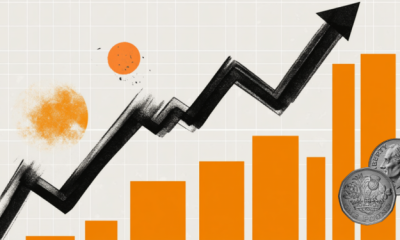
 others5 days ago
others5 days agoGBP/USD rallies on US PPI dip and Trump’s potential Powell removal – Crypto News
-

 others5 days ago
others5 days agoGBP/USD rallies on US PPI dip and Trump’s potential Powell removal – Crypto News
-

 Cryptocurrency5 days ago
Cryptocurrency5 days agoAnarchy, crime and stablecoins – Blockworks – Crypto News
-

 Cryptocurrency1 week ago
Cryptocurrency1 week agoFriday charts: The rise of zero-sum thinking – Crypto News
-

 others1 week ago
others1 week agoCrypto Hacker Who Drained $42,000,000 From GMX Goes White Hat, Returns Funds in Exchange for $5,000,000 Bounty – Crypto News
-

 Cryptocurrency1 week ago
Cryptocurrency1 week agoPump.fun Concludes $500M ICO in 12 Minutes — But Something Doesn’t Add Up – Crypto News
-

 Cryptocurrency1 week ago
Cryptocurrency1 week agoWhy Are So Many Crypto Games Shutting Down? Experts Weigh In – Crypto News
-

 De-fi1 week ago
De-fi1 week agoRobinhood Opens Ether and Solana Staking to US Users – Crypto News
-

 Cryptocurrency1 week ago
Cryptocurrency1 week agoTop 3 altcoins under $1 worth watching: Sei, Ethena, Arbitrum – Crypto News
-

 De-fi1 week ago
De-fi1 week agoRipple’s RLUSD Market Cap Passes $515M, Flips TrueUSD – Crypto News
-
others1 week ago
Bitcoin Critic Vanguard Becomes Strategy’s (MSTR) Largest Shareholder – Crypto News
-
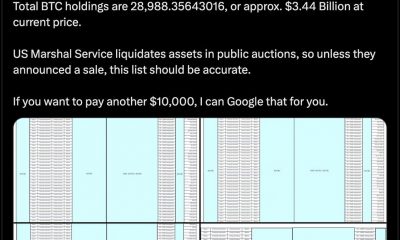
 De-fi6 days ago
De-fi6 days agoU.S. Marshals Peg Federal Bitcoin Holdings at 28,988 Tokens Worth $3.4 B – Crypto News
-
Cryptocurrency5 days ago
Russia’s $85 Billion Sberbank to Launch Crypto Custody Services – Crypto News
-

 Blockchain5 days ago
Blockchain5 days agoNasdaq Exchange Files SEC Form to List Staking Ethereum ETF – Crypto News
-

 Blockchain1 week ago
Blockchain1 week agoAltcoins Chase New Highs After Bitcoin Hits $123,000 – Crypto News
-

 Technology1 week ago
Technology1 week agoV Guard INSIGHT-G BLDC fan review: Cool performer with a premium look – Crypto News
-
Cryptocurrency1 week ago
Fed’s Hammack Raises Inflation Concerns Amid Push For Interest Rate Cut – Crypto News
-

 Cryptocurrency1 week ago
Cryptocurrency1 week agoOmni Network skyrockets 180% as Bitcoin hits $118K: is $10 next? – Crypto News
-

 De-fi1 week ago
De-fi1 week agoDeFi TVL Surges Past $126B, Up Over 45% Since April – Crypto News

